Recently, the results of the preliminary evaluation for the National Science and Technology Awards of 2019 were released. Among them, the FT1500A was listed among the recipients of the National Science and Technology Progress Award. The recognition of a domestic CPU with this prestigious award highlights the government’s emphasis on CPU technology, which is a positive development. However, currently, domestic CPUs still face significant gaps in both technology and commercial performance compared to Intel. In this context, awarding a CPU that performs moderately in terms of both performance metrics and market presence with the National Science and Technology Progress Award seems a bit premature. National honors should be awarded only after achieving technical or commercial parity or superiority over Intel. Once domestic CPUs catch up to Intel, receiving any major awards will be a natural outcome.
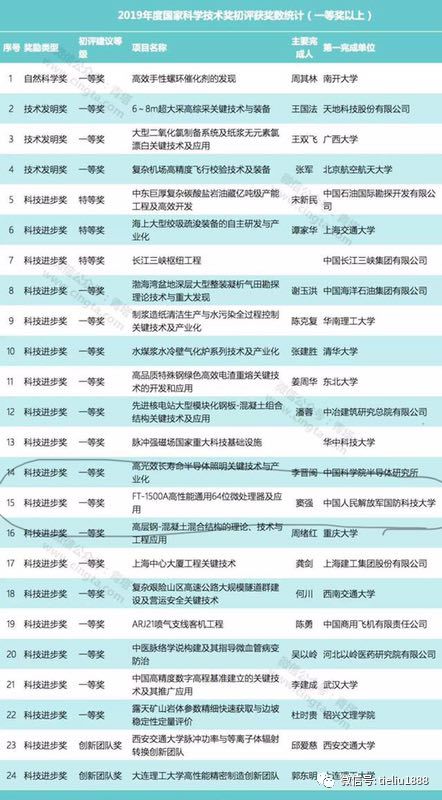
How is the performance of FT1500A?
The FT1500A is an ARM CPU. News reports indicated that the FT-1500A series CPU processors were successfully developed in 2015. The reports stated:
Recently, news from the Tianjin Science and Technology Commission revealed that the FT-1500A series CPU processors have been successfully developed, with key technologies leading domestically and over ten thousand units produced.
It is expected that more than 100,000 units will be produced throughout 2015, covering applications in servers and desktops, and being utilized in various industries such as office, data centers, and finance.
Currently, there are contracts signed for the purchase of over ten million yuan for the Kirin operating system based on FT1500A.
From this, it can be seen that the FT1500A had already achieved mass production in 2015, and from the photos of the launch event, it was evident that the date was March 2015. Since it generally takes about one year from sample to commercial production, it is likely that the FT1500A was completed from late 2013 to early 2014 and then achieved commercial production in 2015.
Regarding the performance of the FT1500A, the official informed that the single-core performance of the FT2000 is improved by 10-20% compared to FT1500A at the same frequency, and the overall performance of the chip is comparable to the Intel Xeon E5-2695v3, thus using the FT2000 as a reference. The SPEC testing results for FT2000 (2GHz) are as follows:
SPECint_base2000:1610
SPECfp_base2000:1589
SPECint_base2006:12.4
SPECfp_base2006:11.3
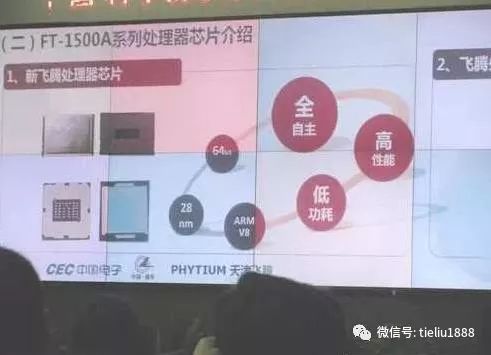
Based on this, the single-core performance of FT1500A can be estimated to be about 10-20% lower than that of FT2000, which roughly equates to one-third of the performance of mainstream Intel CPUs from the same period. In terms of market performance, since the commercial mass production of FT1500A in 2015, it has not achieved significant presence in the commercial market, even facing competition from domestic CPUs such as Longxin, Zhaoxin, and Shenwei.
In terms of serving national-level projects, the Tianhe-1 and Tianhe-2 supercomputers used the FT1000 and FT1500 CPUs, which are based on SPARC open-source code, while the FT1500A is based on ARM. The FT1500 and FT1500A may appear similar, but they do not have a direct inheritance relationship.
Therefore, awarding the National Science and Technology Progress Award to a CPU that is technically inferior to Intel, and even not leading compared to domestic counterparts, while also performing generally in the commercial market, and not serving national engineering projects such as supercomputers, seems excessive. It would be more appropriate to award the National Science and Technology Progress Award once domestic CPUs achieve technical or commercial parity with Intel. Some may argue that catching up with Intel is too difficult; however, at the very least, achieving half of Intel’s single-core performance and making the product available to the public would be a more reasonable basis for awarding.
Furthermore, there is a troubling issue regarding the FT1500A receiving the National Science and Technology Progress Award. If the FT1500A is awarded, should the stronger FT2000 and FT2000Plus also receive the National Science and Technology Progress Award?
Huawei’s Kunpeng 920 claims to be the highest performance ARM CPU in the industry; will it also be awarded the National Science and Technology Progress Award in the future?
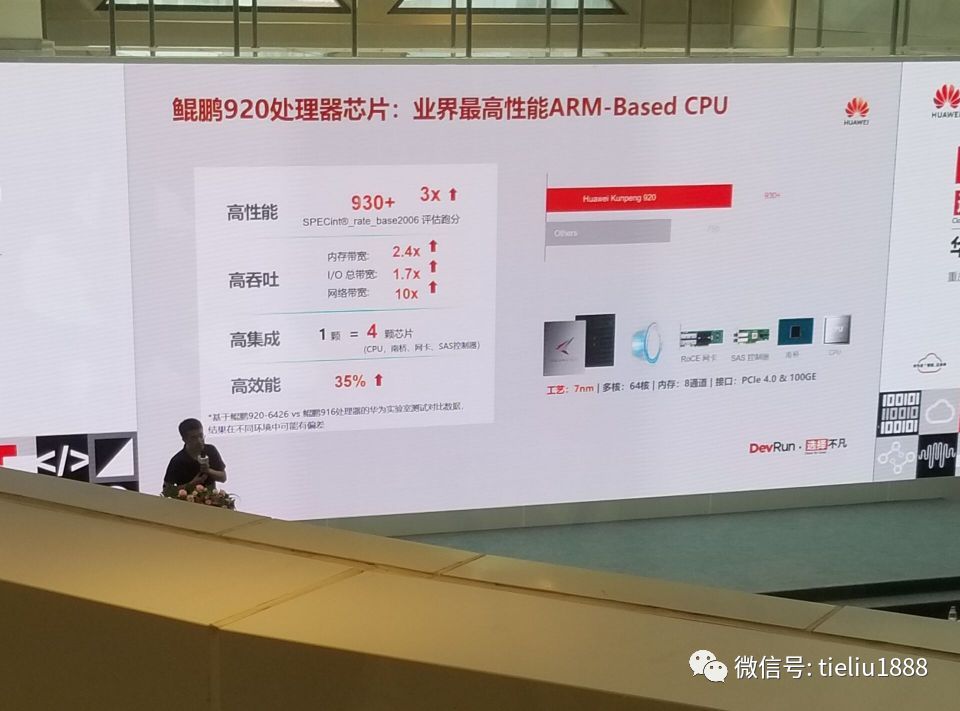
Will the SW26010, which helped the Sunway TaihuLight supercomputer rank on the TOP500 list, also be awarded the National Science and Technology Progress Award?
Will the Longxin 3A4000 and Zhaoxin KX6000, both of which have single-core performance about twice that of FT1500A, also be awarded the National Science and Technology Progress Award in the future?
After all, if even Liao Hua can become one of the five tiger generals, it is only natural to award additional titles to Wei Yan, Ma Dai, Guan Xing, and Zhang Bao. If the awards are not distributed fairly, the public may question the fairness of the awards.
An industry insider commented: FT1500A is not competitive compared to Longxin or Shenwei, its performance is inferior to Haiguang and Huawei, and its market performance is also quite average. Why is it that only FT1500A received a national award?
Since technological introduction requires imitation—modifying the original design—then innovating, based on the SPEC06 testing results, it does not demonstrate any advantages over the ARM public version architecture from the same period. After all, technological development is a process of iterative introduction, and it is not possible to achieve a leap forward overnight. Moreover, the CPU source code is not written 100% independently. Apple’s ARM chips, for instance, were developed over three generations and five models by modifying ARM A8, A9, and A15 before they became independent designs, and Apple’s CPU cores outperform their contemporaneous ARM counterparts, dispelling doubts regarding the value of Apple’s CPUs.
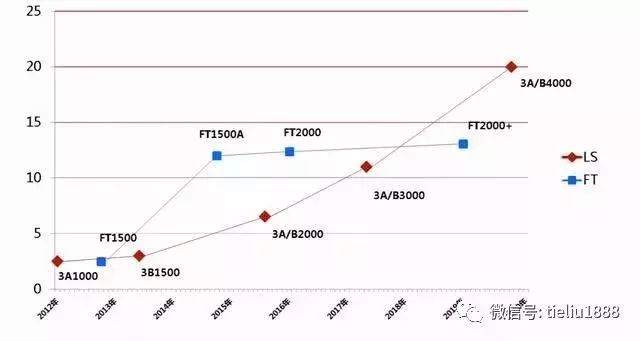
From FT1500 to FT1500A, simply replacing SPARC with ARM immediately resulted in a fourfold increase in single-core performance, while the single-core performance growth of FT2000 and FT2000plus has been limited. This situation is in stark contrast to Apple’s case, and it is difficult to dispel industry doubts about the FT1500A’s claim of having 100% independently written source code. Under these circumstances, pursuing the National Science and Technology Progress Award does not seem particularly appropriate; it would be more prudent to reach a level where performance clearly exceeds that of the ARM public version before seeking awards.
The Kirin System Received the National Science and Technology Progress Award in 2018
Although the Kirin system was not listed among the 2018 National Science and Technology Progress Award recipients, according to reports from the People’s Daily, and official announcements, the Kirin system received the National Science and Technology Progress Award in 2018. The reason for this is that some projects are not public, and some units will disclose this information themselves. For example, the special award in 2017 was only reported on the official website for two projects, but there was actually a third project that was not publicly listed on the website, although it had been reported by the media, similar to the Kirin system.
Here, it should be noted that this Kirin system is not the same as the previous Galaxy Kirin; the previous Galaxy Kirin was an 863 project that heavily referenced BSD code. According to publicly available information:
In an article analyzing technology published on April 27, 2006, by a netizen named Dancefire, it was claimed that the Kirin operating system version 2.0, upon reverse engineering, was found to have over 90% similarity to the FreeBSD operating system version 5.3 from the U.S.
More evidence suggests that the Kirin operating system is merely a modified version of the open-source FreeBSD and not what the media has described as “independently developed in China with complete proprietary rights for the kernel.”
However, this Kirin system shares similarities with the previous Galaxy Kirin, as the Galaxy Kirin referenced BSD, while this Kirin system references Linux.
In fact, developing an operating system based on Linux is not too difficult, especially with companies in Europe and the U.S. providing distributions like Fedora and Debian, making the development of an operating system even easier.
Therefore, developing an operating system based on Linux and then receiving the National Science and Technology Progress Award in 2018 raises some eyebrows, and it makes one wonder how manufacturers of operating systems like Puhua and Deepin feel about this.
Indeed, due to the lack of transparency, there may be underlying reasons for the Kirin system receiving the National Science and Technology Progress Award that the public is unaware of.
The Importance of National Credibility and the Need for CPU Companies to Focus on Industry Development
In recent years, due to the actions of Trump, the people of China have fully recognized the pain brought about by the “lack of chips and soul,” and there is a strong desire for domestic CPUs and operating systems to drive Intel and Microsoft out of the Chinese market.
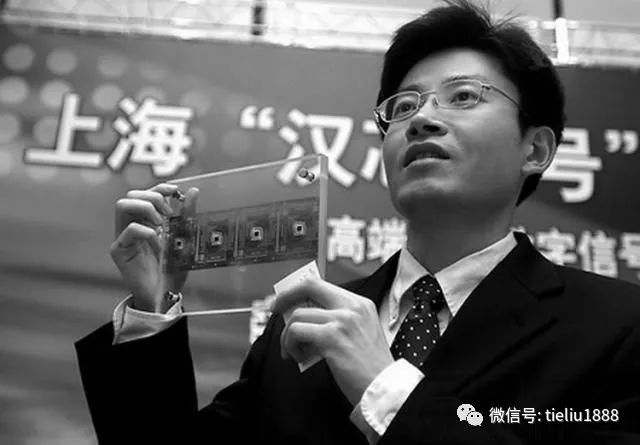
However, in online discussions, whenever domestic chips are mentioned, various jokes about “polishing,” “not enough sandpaper,” “knockoffs,” and “fraudulent funding” flood the comments, and the “Hanxin” incident has reinforced some people’s preconceived notions, leading many to hold a skeptical attitude towards domestic chips, which has even harmed the reputation of genuine efforts.
To this day, some netizens still associate the Hanxin incident with Longxin. Recently, the president of the University of Science and Technology of China embedded a Longxin 3A1000 CPU in a letter to the 2019 undergraduate freshmen, and some people still related the Hanxin incident to Longxin.
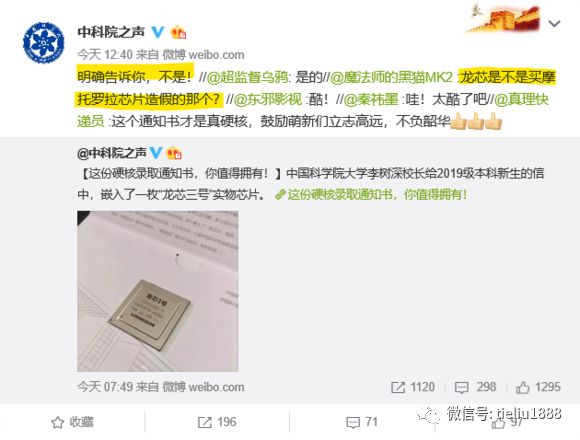
The reason for this is that some media outlets enjoy using sensationalist language in their reports, while our official awards and reports lend credibility to these sensationalist narratives.
When the domestic CPUs remain invisible in the market, and Intel continues to monopolize, the government endorsing domestic CPUs with national credibility and bestowing various titles and accolades can easily lead the public to feel that “these domestic CPUs are just scams for funding,” resulting in a negative perception of any domestic CPU. This may even lead to subtle views on national honors.
After all, when the uninformed public raises doubts about a particular project on the honor roll, it naturally leads to skepticism about other projects on the list, resulting in a trust crisis.
From the People’s Daily’s report on the 2018 National Science and Technology Progress Awards:
In the transportation sector, Weichai Power led the completion of key technologies and applications for heavy commercial vehicle powertrains, changing China’s passive situation of lacking core technologies for heavy powertrains;
In the power sector, breakthroughs were made in live prevention and control technologies for forest fire disasters, with significant social benefits; in the energy sector, the invention of deep, high-precision wide-area electromagnetic exploration technologies and equipment achieved a leap from coarse to fine resource exploration techniques, providing a “Chinese model” for deep resource exploration.
Additionally, the independently developed Kirin operating system, the permanent magnet traction system for rail transit, large-size high-performance laser polarization film components, and turbine damping blades have all broken foreign monopolies, changing the situation of being constrained by key core technologies.
However, whether it is last year’s Kirin system or this year’s FT1500A, at least from the introduction in the People’s Daily, both fall short in social benefits and technical metrics compared to other award-winning projects.
Even from the perspective of breaking monopolies and changing the situation of being constrained by core technologies, FT1500A is not the only solution. Moreover, the incident of ARM sanctioning Huawei indicates that FT1500A also faces the risk of being sanctioned by ARM, and does not change the situation of being constrained.
It is clear that the gap between domestic CPUs and operating systems and Intel and Microsoft remains significant in both technology and commercial aspects. In this situation, it is essential to set aside fame and profit, remain low-key and pragmatic, and focus on hard work, striving to catch up with Intel in terms of technical metrics and market share. Once success is achieved, receiving any awards will be a natural outcome.
In conclusion, it is believed that domestic CPU companies should focus their main energy on improving CPU technical metrics and industrial development, rather than on awards. They should not place too much emphasis on these awards and preferably should not participate in them. Longxin has clearly stated that it does not actively apply for national awards and is committed to following a market-oriented path. Domestic CPU companies should not engage in award-seeking behaviors but should sincerely and diligently promote the domestic replacement of CPUs.
When the public is using domestic CPUs, they will naturally praise the CPU companies.
The reputation of the people is worth more than gold or silver, and public acclaim is more valuable than any awards.